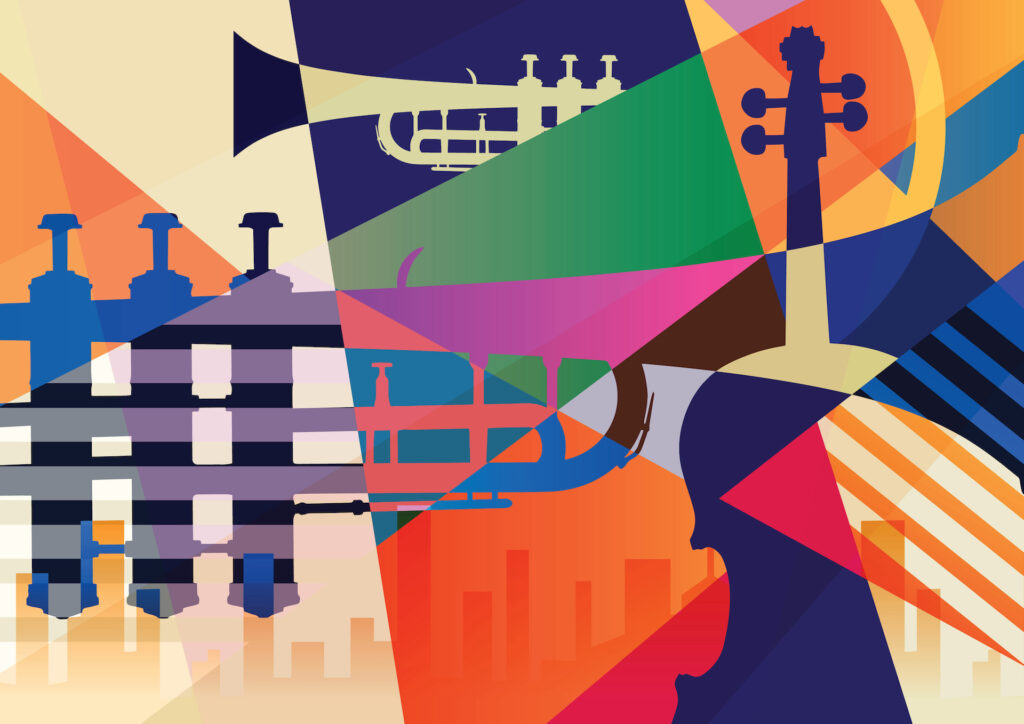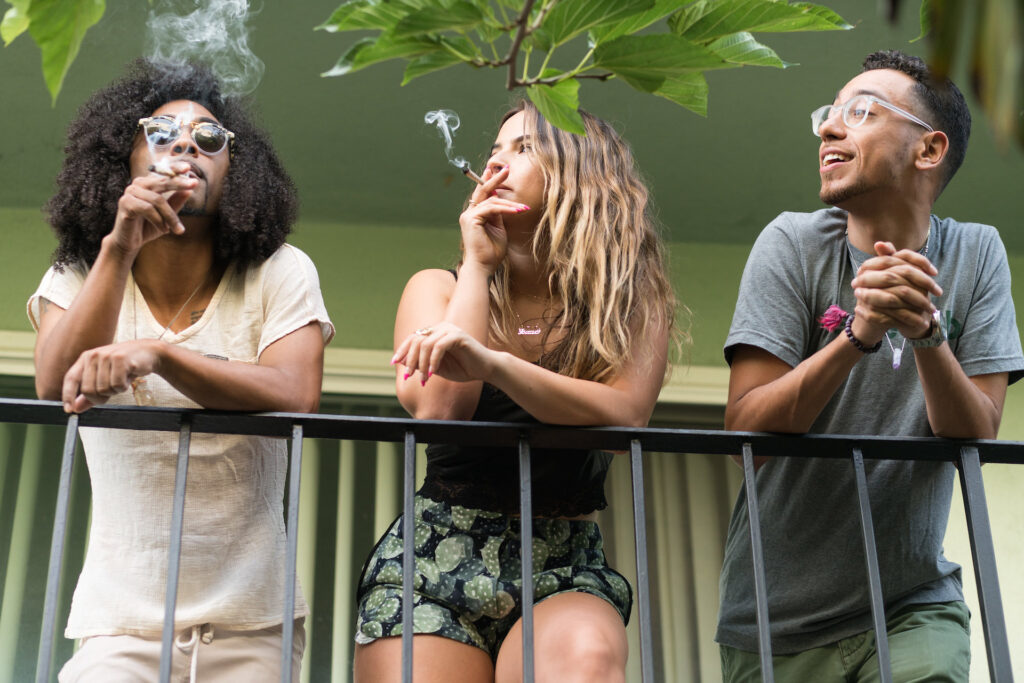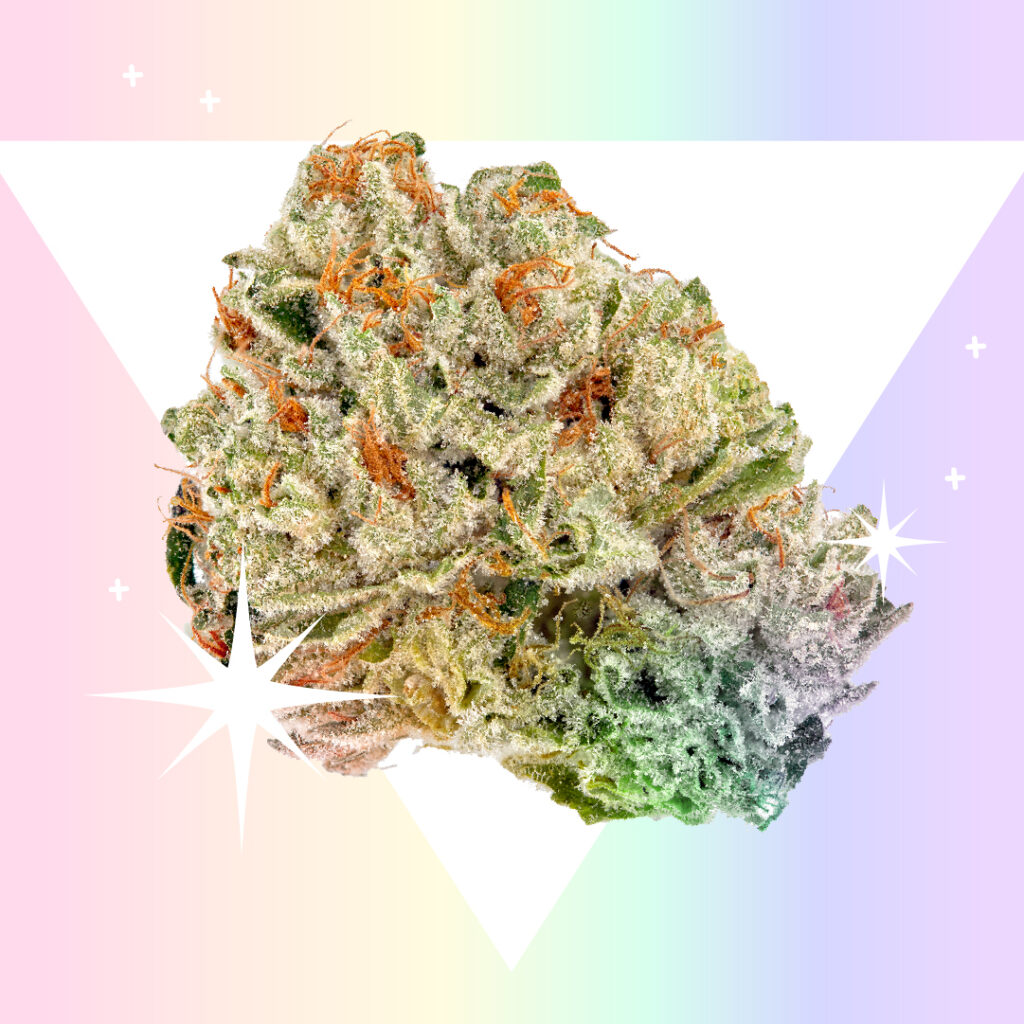Is Weed Gay ?: Iconic Influence in America
Cannabis and the LGBTQIA + culture intersect in every corner of society, from our individual social life to our culture as a whole.
Over the course of American history, and especially in the last century, the place of cannabis and queer people in society has changed dramatically. The strong connection between queer culture and cannabis culture has remained.
While both cultures enjoy a good activism moment, we are also people who want to socialize, relax, create art, and find communities where we feel safe and seen.
A growing part of LGBTQIA + social life

For many queer people, cannabis use fits closely with an ethos of life that is separate from strict rules of society and the judgments of more conservative social norms. It’s not just part of how queer people relax and unwind, but how we indulge, bond, and socialize with other queer people and with sexual and romantic partners.
Cannabis companies have also caught on. In recent years, cannabis companies have increasingly marketed their products to queer consumers, offering deals and special products during the Pride season.
However, the Pride-exclusive nature of many of these marketing efforts leaves plenty of room for growth, especially when queer consumers make up such a strong market year-round.
With a global spending power of over $ 5.4 trillion and a clear passion for cannabis, queer users will continue to grow as a priority for smart cannabis brands.
Why is cannabis so popular in queer circles?
Common anti-establishment roots
Once upon a time, both cannabis use and queer identity were considered immoral outsider behavior in America. Instead of giving up what and who they loved, many people adapted and changed the country forever.
Counterculture icons such as the great beat poets of the 1950s and punk musicians of the 1980s rejected traditional gender roles, sexual mores and of course the ban on cannabis. As the counterculture movement grew with both LGBTQ + people and cannabis enthusiasts, the creative arts would play an important role in promoting the influence of queer people and cannabis enthusiasts.
Design of the art landscape

Both cannabis and queer culture are linked to some of the most important art movements in American and global history.
Jazz, one of the most influential movements in American music, has a history rich in both queer artists and cannabis. Notable queer musicians like Tony Jackson, Gladys Bentley, Gertrude “Ma” Rainy and Bessie Smith have helped shape jazz music.
connected
Why the weed biggest villain chased Billie Holiday to death
Cannabis was equally influential in jazz, so joints gained both popularity and the nickname “jazz cigarettes” due to their prevalence in the scene.
We find further connections in the art scene. One of the most influential painters of all time, Frida Kahlo was not only a bisexual woman, but also used cannabis to create her masterpieces and her body. The prevalence of cannabis and queerness among respected artists helped instill respect for both cannabis and queer people.
Reefer and rebellion
The 1960s saw a surge in rebellion and self-expression that would encourage many young queer people and cannabis enthusiasts alike.
In California, the hippie movement started many queer underground magazines and pulp novels. New York’s influential visual arts scene was abundant in queer art legends such as Andy Warhol and David Hockney, as well as a rich cannabis culture. Queer musicians of the 1960s, like Janis Joplin, became increasingly free to speak freely about their love for cannabis. Art, fashion, sound and style found their way into the mainstream of the suburbs and shaped the artistic sensitivity of a generation enormously.
connected
7 cannabis strains to celebrate Pride
In the 1990s, New York’s club kids scene was heavily steeped in not only the groundbreaking creativity and vivid expression of queer artists, but also the freedom of psychoactive experimentation. The scene’s celebrities, like Ru Paul, became massive cultural figures who transcended the underground scene they originated in and influenced fashion, music and television for decades to come.
Without queer artists and the carefree, creative energy that many artists find in cannabis, the visual arts, music, literature and film might not be as vibrant and free-spirited as they are today. Art scenes like this allowed queer people to become icons and cannabis was seen as a tool for creativity rather than a vice.

As we have progressed as a society, it has (luckily) gone out of style to spend your time bending over other people’s harmless actions. In the second half of the 20th century, both queer life and cannabis use became less taboo.
The Hays Code, which made it illegal to show depictions of queer people and drug use in film, was repealed in the 1960s and more queer depictions found their way into the mainstream.
Increased representation helped transform the public perception of LGBTQIA + people and cannabis alike, and change popular culture forever.
Young people today are more likely to support the legalization of cannabis and the rights of LGBTQ + people. This is in part because both queer people and cannabis users have been humanized in pop culture rather than making the joke.
With the new freedom to break cultural norms and live the way it works for them, cannabis is just another way for queer people to openly lead lives that feel authentic and free.

Another reason cannabis is so widespread in queer culture is that many queer people find smoking partners in their queer friend groups or in groups of open-minded queer allies.
Because as queer people, both our social circles and our collective smoking circles have their roots in exactly the same: a circle of trust.
In a prohibition environment, it is not wise to use cannabis with people you do not trust. This could mean exposing yourself to those who betray you to the authorities or revealing your stoner status in ways that could damage your public and professional reputation.
Similarly, if you were outed as gay, your life could be ruined throughout history. In the 1950s and 1960s, police raided suspected LGBTQ + bars and facilities and published information about suspected queer people in newspapers.
This information could destroy family and career and lead to isolation from relatives, friends and religious groups. For many queer people in conservative areas of the United States or in more conservative countries around the world, the outing can still pose a very real threat to their livelihoods and physical safety.
Trust is the key
For generations, both the cannabis and queer communities have only survived on the basis of trust. For queer people, our social groups are a place where we can explore our gender representation, express our desires and live in dignity. They are a natural safe place to enjoy cannabis without fear of court or punishment.
Not all queer people enjoy cannabis. Not all queer people want to be around cannabis. Not all queer social circles are a good place for cannabis. But when the two meet, they create a unique environment in which queer stoners can relax and feel safe among friends. And for queer people all over the world, that’s a gift.
Bottom line: yes, weed is gay.
Cannabis is at the core of queer culture. Your path to legalization and political acceptance mirrors ours. In healthcare, cannabis is an important wellness resource for queer people. Socially, cannabis goes hand in hand with the way we create art, how we relax, and how we feel good in a community of like-minded people.

The story of queer people and cannabis is about more than history or medicine or art or socializing. It’s also a story about survival, about community, and about our will to live in a way that feels authentic and true.
If you’re queer, celebrate Pride by rolling a joint like our ancestors, ancestors, and ancestors. If you’re an ally, smoke out your queer friends. And with the power I’ve been given over this byline, if you’re a homophobe, I hope someone is selling you some dirty-assed oregano this Pride month.
Read more about queer culture and weed
C. Merten
C. Merten is a Chicago-based writer, creative, and cannabis enthusiast. Her passions include breakfast, 70s music, pina coladas and the rain.
View article by C. Merten
By submitting this form, you subscribe to Leafly news and promotional emails and agree to Leafly’s Terms of Use and Privacy Policy. You can unsubscribe from Leafly email messages at any time.

Post a comment: